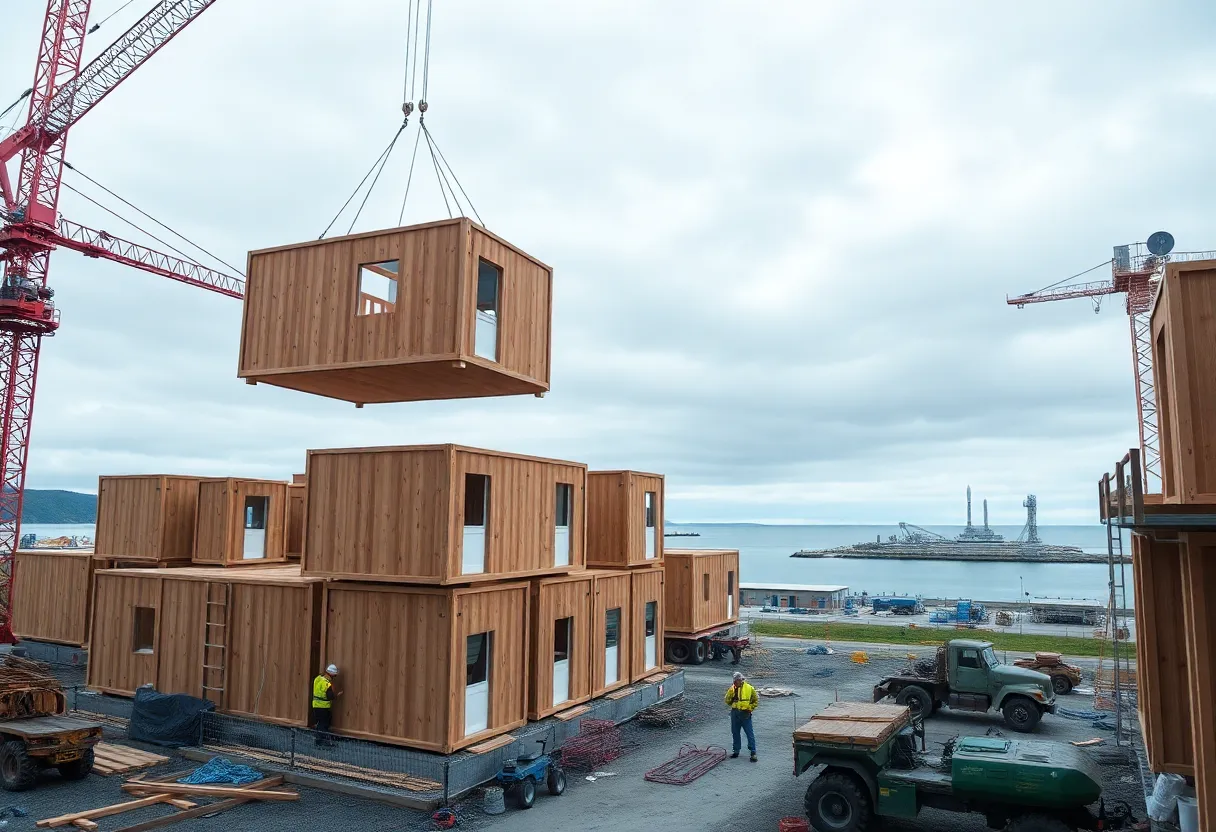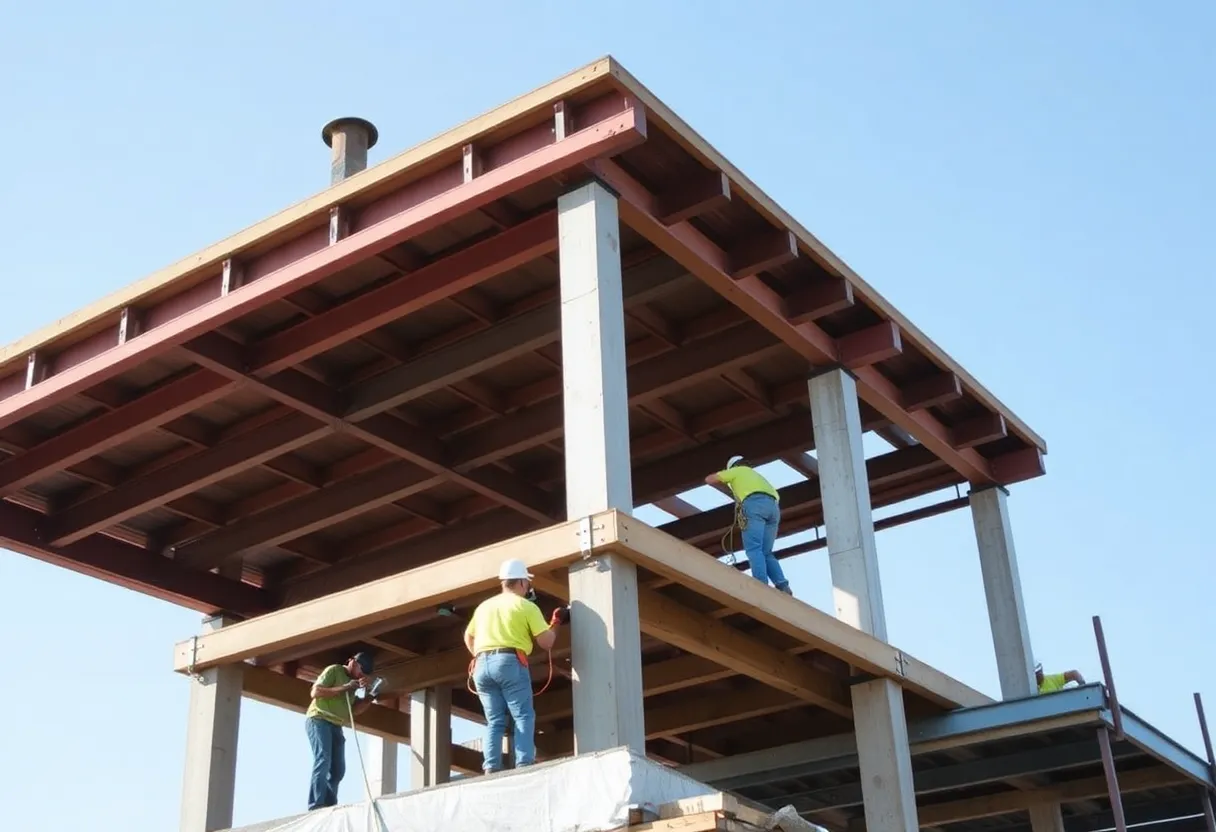Canada, August 19, 2025
News Summary
Canada’s housing sector is at a pivot point as affordability pressures persist despite modest productivity gains and faster modular build times. Builders report improved outcomes from AI, BIM and digital twins while offsite methods cut completion times and costs. At the same time, purpose-built rental development is cooling as institutional returns fall and financing tightens. Regional activity is uneven—Montreal and prairie centres see multi‑unit growth while Toronto and Vancouver face slumps. Atlantic provinces are refocusing immigration on key occupations, and a private spaceport project in Newfoundland signals new industrial investment alongside housing policy efforts to boost supply.
Canada at a housing crossroads: productivity gains, modular wins, rental pullbacks, regional shifts, and a new spaceport
Top line: Canada faces a tough housing affordability problem even as builders squeeze out modest productivity gains and modular methods shorten build times. Big rental developers are pulling back, regional starts are uneven, Atlantic provinces are refocusing immigration priorities toward key jobs, and a private spaceport project in Newfoundland marks a new industrial push.
Why it matters now
Home prices in major cities remain stubbornly high despite softer demand, leaving many buyers priced out. At the same time, the construction industry is showing measurable productivity improvement that could lower costs if widely adopted. The federal government has a large housing plan aimed at boosting annual output to 500,000 units by 2030 and is prioritizing modular construction and mass timber as part of that push.
Productivity and technology: modest gains, big potential
The Canada Construction Labour Productivity Index sat at 92.47 as of March 2025, reflecting a 2.15% year-over-year gain on a scale that uses 2007 as a base year (100). That gain signals progress but leaves Canada behind the U.S. on productivity measures, a gap the OECD links to slow uptake of advanced tools and a fragmented small-business sector.
Industry studies show strong belief in tech: 90% of construction leaders agree tools like AI, Building Information Modelling (BIM), and digital twins are essential, and 81% report measurable gains from recent tech investments. On-the-ground results include projects using offsite modular methods that cut build-to-occupancy times by up to 40%, with Regina’s Horse Dance Lodge completed in 12 months as a clear example.
AI-driven design checks, IoT sensor networks, and digital twins are reducing costly mistakes, enabling predictive maintenance, and easing labour needs by streamlining workflows. For investors, construction firms that adopt these tools early are poised to outperform peers. A financial model suggests a 1% drop in unit labour costs could translate into roughly a 1.2% fall in home prices—small but meaningful if scaled.
Rental development: pullback and financing pressure
Purpose-built rental development is cooling. A major diversified developer that launched a rental division in 2018 is planning to sell its existing rental buildings and largely exit direct residential development, shifting to deals where outside investors provide most capital while the company contributes land and expertise. Institutional investors are increasingly wary after returns fell to levels as low as 4.5% annually, and rising interest rates since March 2022 have weakened commercial real estate fundamentals.
Falling rents in Toronto and Vancouver, sticky development costs, and a big wave of condo completions have made financing tougher. Public figures on rental starts can be misleading: while some counts show activity rising, consultants tracking early-stage work report rental starts have plummeted by about 60% recently. Two-thirds of new rental buildings in the Greater Toronto Hamilton Area are offering incentives such as two months free rent and free parking, a sign that market pricing is under strain.
Regional split: some markets boom, others cool
National starts jumped in July to a seasonally adjusted annualized pace of 294,100 units, a 3.7% rise from June and far above many forecasts. Activity in centres of 10,000 people or more rose 4% in July with 23,464 units breaking ground. Montreal saw a dramatic spike in starts—up 212%—driven by multi‑unit projects. In contrast, Toronto recorded an overall slump of 69% compared with last year, as both multi-unit and single-detached starts fell.
Prairie provinces are seeing a surge in multi-family starts backed by rental demand and supportive local policy. Calgary and Montreal are noted as markets with resilient demand, while Toronto and Vancouver face oversupply and downward pressure on prices and rents. Analysts warn that cooling is likely in 2026 tied to slower population growth and falling asking rents in several places.
Policy, labour and the long view
The federal government’s $129 billion housing plan includes a Build Canada Homes program and aims to double construction output. Some provinces are cutting development charges for multi-unit housing and removing sales taxes on homes under specified prices as incentives. Still, development charges remain an important, sticky revenue line for municipal governments and can blunt gains from falling land and construction costs.
Workforce development will be key. Apprenticeships and diversity, equity and inclusion programs are cited as critical to sustain productivity momentum and to ease labour shortages that remain a top risk for projects and investors. Public-private partnerships are a favored route for spreading risk and tapping new capital.
Atlantic immigration: focused intake for key jobs
With a reduced allocation in 2025, Atlantic provinces are prioritizing workers in health care, construction, manufacturing and other select sectors through the Atlantic Immigration Program. Provinces have adjusted endorsement and nomination rules: some are prioritizing applicants already in the province, others are limiting applications to high-demand sectors, and one adopted an Expression of Interest model to manage applications. These moves aim to match incoming workers to short-term needs in hospitals, job sites and plants.
Newfoundland spaceport and industrial spin
A private company has begun construction on an Atlantic spaceport complex in Newfoundland and Labrador near St. Lawrence. The introductory $10 million phase includes two facilities: a complex with two orbital pads and a second site for suborbital flights and tracking. The site will support the company’s small orbital rocket and an initial suborbital test flight powered by an in-house 3D‑printed engine. The project claims to create nearly 650 jobs and contribute about $2.5 billion in economic activity through 2035. Other Canadian launch sites and projects are in progress on the Atlantic coast.
Bottom line
Canada’s housing sector is at a pivot point. Productivity gains from technology and modular construction offer a path to lower costs and faster builds, but weak returns on rental projects, rising borrowing costs, and regional mismatches leave the market fragile today. Policy moves and workforce programs will matter. Investors who focus on productivity-driven builders, growing regions, and public-private deals may capture value, but risks from regulatory delays and labour shortages remain real.
FAQ
Q: Are housing starts actually rising across Canada?
A: National figures show a jump to an annualized pace of 294,100 units in July, but regional performance varies widely. Montreal recorded a large spike in multi-unit starts while Toronto experienced a significant slump.
Q: How much have productivity measures improved?
A: The Canada Construction Labour Productivity Index was 92.47 in March 2025, a 2.15% year-over-year gain. Adoption of AI, BIM, modular methods and digital twins has also delivered project-level time and error reductions.
Q: Is modular construction really faster?
A: Yes. Examples show modular and offsite methods can cut build-to-occupancy times by up to 40%, and projects like Regina’s Horse Dance Lodge completed in 12 months using these techniques.
Q: Why are rental developers pulling back?
A: Returns on rental development have fallen, sometimes to around 4.5% annually. Falling rents in major markets, sticky development charges and high financing costs have reduced the appeal for institutional capital.
Q: What is changing in Atlantic immigration?
A: The Atlantic Immigration Program has been retooled in 2025 with provinces prioritizing specific occupations like healthcare and construction, and some provinces limiting endorsements or using an Expression of Interest model to manage lower allocations.
Q: What is the new spaceport project?
A: A private Atlantic spaceport is under construction in Newfoundland and Labrador. The first $10 million phase adds two orbital pads and suborbital support, with plans for suborbital test flights and later orbital launches tied to the developer’s rockets and satellites.
Key features at a glance
| Topic | Fact / Figure |
|---|---|
| Construction Productivity Index (Mar 2025) | 92.47; +2.15% year-over-year (2007=100) |
| Federal housing plan | $129 billion; target 500,000 units annually by 2030; favors modular and mass timber |
| Modular build time reductions | Up to 40% faster; Regina project finished in 12 months |
| Rental developer returns | As low as 4.5% annually for some institutional investors |
| National housing starts (July) | 294,100 annualized pace; Montreal starts +212%; Toronto -69% |
| Atlantic Immigration Program (2025) | Prioritization for healthcare, construction, manufacturing; province-specific rules and EOI models |
| New spaceport (Newfoundland) | $10M intro phase; two orbital pads and one suborbital/tracking site; jobs ~650; $2.5B impact by 2035 |
Deeper Dive: News & Info About This Topic
Additional Resources
- The Globe and Mail: Rental-apartment construction, developers and market shifts
- Wikipedia: Construction industry of Canada
- MSN: Prairie housing starts drive Canada-wide residential construction increase
- Google Search: Canada housing starts prairie provinces 2025
- Space.com: Canada’s 1st commercial spaceport is under construction
- Encyclopedia Britannica: Spaceport
- CIC News: Atlantic Immigration Program — priorities for 2025
- Google Scholar: Atlantic Immigration Program 2025 labour market
- ConstructConnect: Canada’s in need of a contech and proptech revolution
- Google News: contech proptech Canada 2025
Author: Construction FL News
The FLORIDA STAFF WRITER represents the experienced team at constructionflnews.com, your go-to source for actionable local news and information in Florida and beyond. Specializing in "news you can use," we cover essential topics like product reviews for personal and business needs, local business directories, politics, real estate trends, neighborhood insights, and state news affecting the area—with deep expertise drawn from years of dedicated reporting and strong community input, including local press releases and business updates. We deliver top reporting on high-value events such as the Florida Build Expo, major infrastructure projects, and advancements in construction technology showcases. Our coverage extends to key organizations like the Associated Builders and Contractors of Florida and the Florida Home Builders Association, plus leading businesses in construction and legal services that power the local economy such as CMiC Global and Shutts & Bowen LLP. As part of the broader network, including constructioncanews.com, constructionnynews.com, and constructiontxnews.com, we provide comprehensive, credible insights into the dynamic construction landscape across multiple states.





